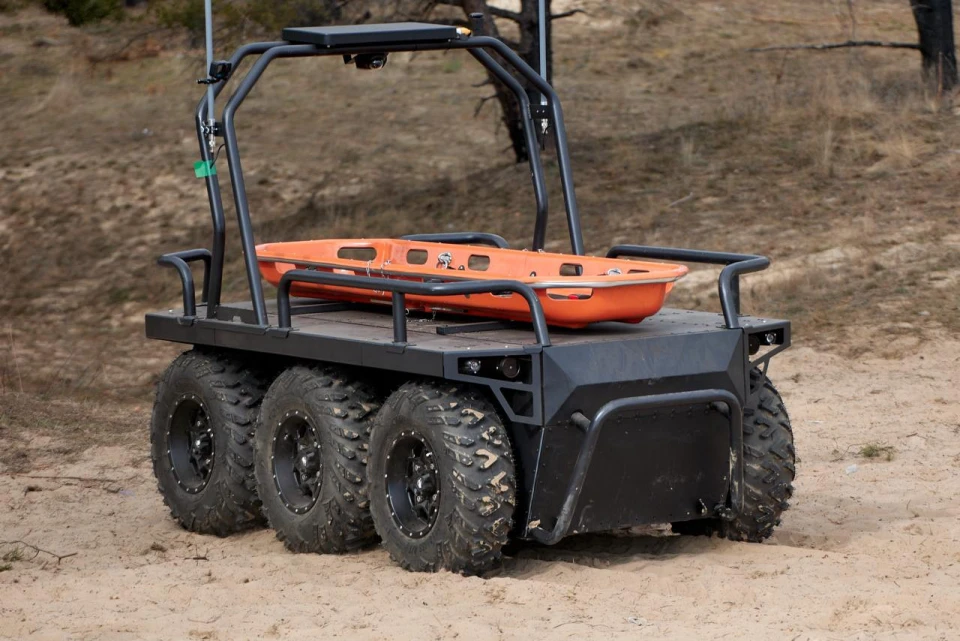
F-16s in Ukraine and airspace parity: what will change on battlefield. Serhiy Zgurets' column
Experts caution not to expect a quick and significant impact from the F-16s on the situation at the front. Their effect will be noticeable, but gradual
F-16 in Ukraine
The first Western F-16 fighter jets has already arrived in Ukraine. This was reported recently by several foreign media outlets, citing unidentified sources. The news was initially published by Bloomberg, which noted that the number of jets is small. Later, the Telegraph reported that there have already been the first combat sorties with the F-16s, although they have so far been used for air defense. It is claimed that Ukraine could have received six aircraft. By the end of the year, there could be 20. At the same time, the total need for fighter jets, as stated by President Zelenskyy, is 128 aircraft.
Until today, neither the higher political leadership nor Ukraine's Air Force command has commented on the arrival of the F-16s. This is appropriate since, for Russia, any information regarding these aircraft, even the region where they might be spotted, is valuable. It can be assumed that Russia will attempt to demonstratively destroy these aircraft as much as possible. We remember the persistence with which Russian cruise missiles attack all airfields where aircraft might be stationed, especially Starokostiantyniv, which has special shelters for aircraft protection.
In an interview, Serhiy Holubtsov, chief of aviation for the Ukrainian Air Force Command, stated that the F-16s are not a panacea. He explained that it is necessary to progress through stages: first, learning to crawl, then walk, and eventually run. Currently, the focus will be on the initial stage—getting accustomed to safe areas and mastering the operational environment. As proficiency increases, the next stages will involve advancing to walking, running, and ultimately gaining air superiority.
Holubtsov emphasized that the first priority is to ensure that guided bombs do not target Ukrainian soldiers and civilians. Ukraine needs to address the threat from Russian Su-34s, which deploy these bombs. Once the Ukrainian forces can handle these aircraft, the next step will be to target the Su-35s, which provide cover. If Ukrainian forces can push these cover aircraft back by at least 30-50 km, it could mark a turning point, achieving at least parity in the airspace. The effectiveness of this strategy will depend significantly on the armament of the Ukrainian F-16s.
The Wall Street Journal analyzed the weapon samples being transferred to Ukraine along with the F-16s, including HARM missiles, JDAM-ER gliding precision bombs, SDBs, AIM-9X, and AIM-120D air-to-air missiles with ranges up to 160 km. However, AGM-158 cruise missiles and specialized electronic warfare (EW) pods designed to counter Russian missiles were not mentioned. But this is already a first step. It is important that the first F-16 jets are already in Ukraine, which took a year and a half of political and military-technical efforts. This is both a long and quick process. No country in wartime conditions has transitioned to a new type of aircraft so quickly. Ahead lies a colossal amount of work for Ukrainian Air Force command and military to develop effective tactics for combating Russian aircraft, expand the arsenal of weapons, increase the number of aircraft, and ensure air dominance. As our pilots say, victory on the ground is forged in the air. We hope that over time, this will indeed be the case.
Arms for newly created brigades
Recently, President Zelenskyy gave an interview to four French media outlets, where he addressed why Russian forces are advancing on the front line. He attributed the primary issue to an insufficient supply of weapons. Zelenskyy noted that while 14 brigades have been formed, they lack adequate equipment and weaponry. He stated that there is currently enough weaponry for only three brigades, and if there were enough for ten, it would be possible to discuss rotation and halting the Russian advance in the areas they are currently targeting. The Pokrovsk direction, in particular, is currently the hottest spot. The president also mentioned that the weapons being transferred come with limitations; for instance, long-range American weapons like the ATACMS cannot yet be used deep into Russian territory, which imposes restrictions on the Ukrainian Armed Forces. He emphasized that the goal is to gain an advantage over the Russians not through manpower—which is essentially impossible—but through superior weapons and technology.
Technological changes in the Ukrainian Armed Forces are currently being implemented with the support of private companies and teams, who are applying their experience to specific projects. This particularly pertains to ground-based robotic platforms. Just recently, Ukraine's Minister of Digital Transformation, Mykhailo Fedorov, announced on his Telegram channel that the Ratel H remotely controlled robotic platform, designed for evacuating wounded soldiers from the battlefield, has been submitted for serial production. The machine was developed by participants of the Brave1 defense cluster.
Features of the Ratel H robotic platform

Photo: Mykhailo Fedorov
Taras Ostapchuk, a serviceman and developer of the Ukrainian Ratel drones, reported that the Ratel H robotic platform has a wheelbase of 2.5 by 1.4 meters and a 6x6 wheel drive. It has three control systems, one of which is satellite-based, with two backups. It can serve as a mobile electronic warfare (EW) point and can function as an EW unit. It can carry 650 kg, which is more then enough for two wounded soldiers. It can accommodate two stretchers and can tow up to 2.5 tons. The control range is unlimited. Considering the satellite control system, the operator can be anywhere in the world. The platform's range is about 35 km.
Regarding the possibility of using the mission at night and its relevance, given the combat experience of those already using this platform, Ostapchuk noted that the platform is equipped with conventional headlights, infrared headlights, and an infrared night camera, all of which make it fully operational at night.
Operator training
The company also manufactures other types of robotic platforms. The robots destroyed bridges behind enemy lines and other enemy objects. The area of mining and kamikaze drones accounts for 70% of the robots that are being manufactured now, "I just returned from the east. We have reached the point where people working in engineering departments are faced with the issue of mining either by ground robots or UAVs. The issue of manual mining has been almost eliminated, which saves the operator. As of now, a methodology for using ground-based robotic platforms for remote mining has been developed. It has already been developed and is now undergoing some adjustments. We are training operators and instructing instructors of training units for this purpose. I think it will be ready for combat use by the end of this year," Ostapchuk said.
Drone components export
Recently, there have been reports from the Chinese side about restrictions on the export of components for drones and other equipment used by other countries on the battlefield. Ostapchuk spoke about the risks to the rhythmic fulfillment of orders.
"I have two platforms: Ratel M is a logistics platform with a payload of 250 kg and a range of 30 km, and Ratel J has a payload of 650 kg and a range of 30 km. They have about 70% of Ukrainian products, about 20% from Europe and about 10% from China. Accordingly, if China completely bans the export of its products, we will hardly feel it, the platform will rise in price by a negligible 5%. Ratel S is a remote kamikaze miner, with 70% of its components coming from China. We are already fully testing our communication systems and, accordingly, in two months it will be 40% China, and by the end of the year it will be 10%, and possibly without China at all. This will only affect the cost of the platform, as there are solutions from Europe and the US, but they are much more expensive," he said.
"The Russians make products and go through exactly the same process as we do. Unfortunately, they have support for Chinese components, but in my personal opinion, they are more than six months behind us. If China completely closes its exports, they will have Europe and the US closed, given the sanctions, they will not have more technological solutions, and if China closes, Russia will suffer more than we will," he summarized.
- News













































